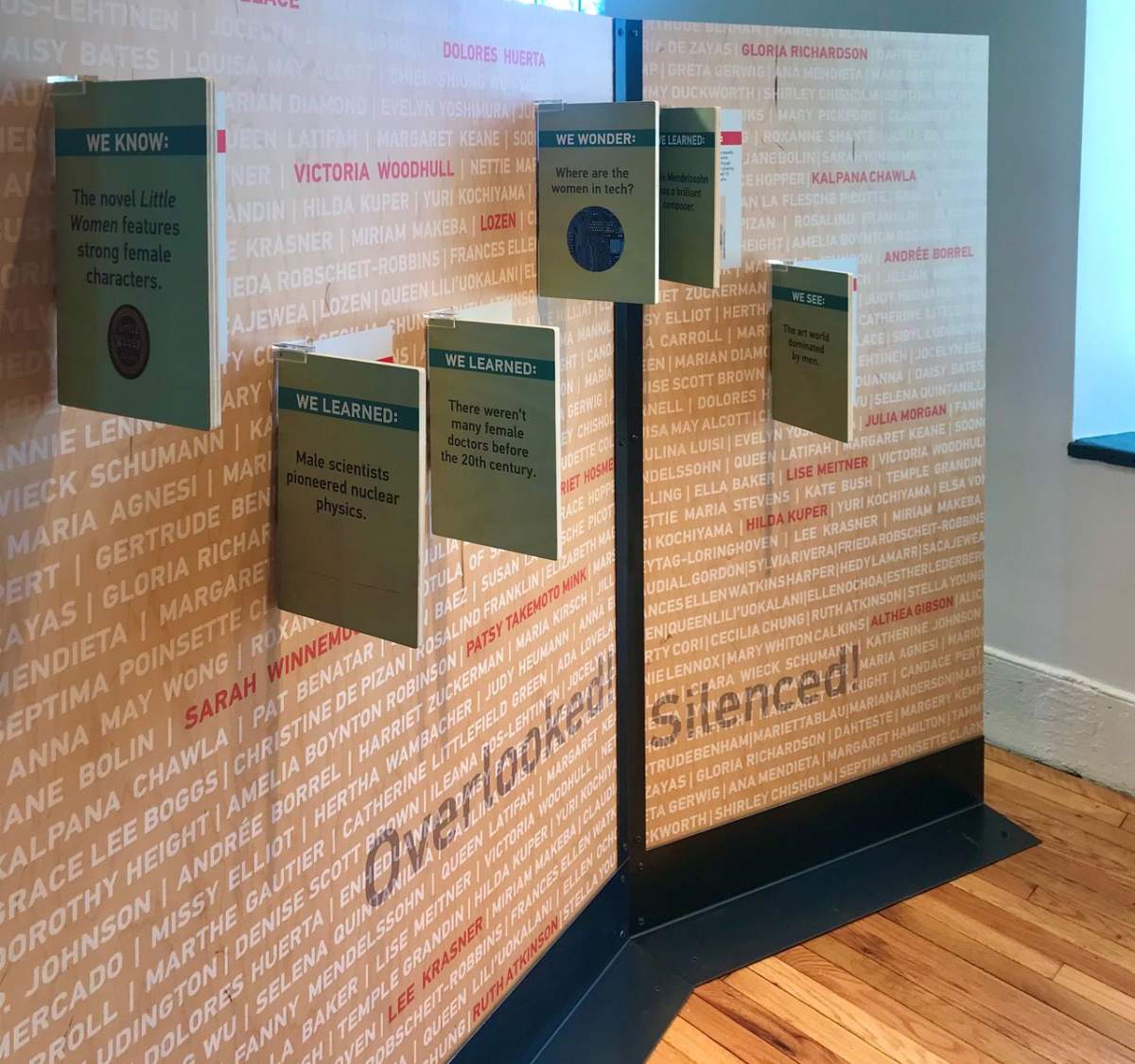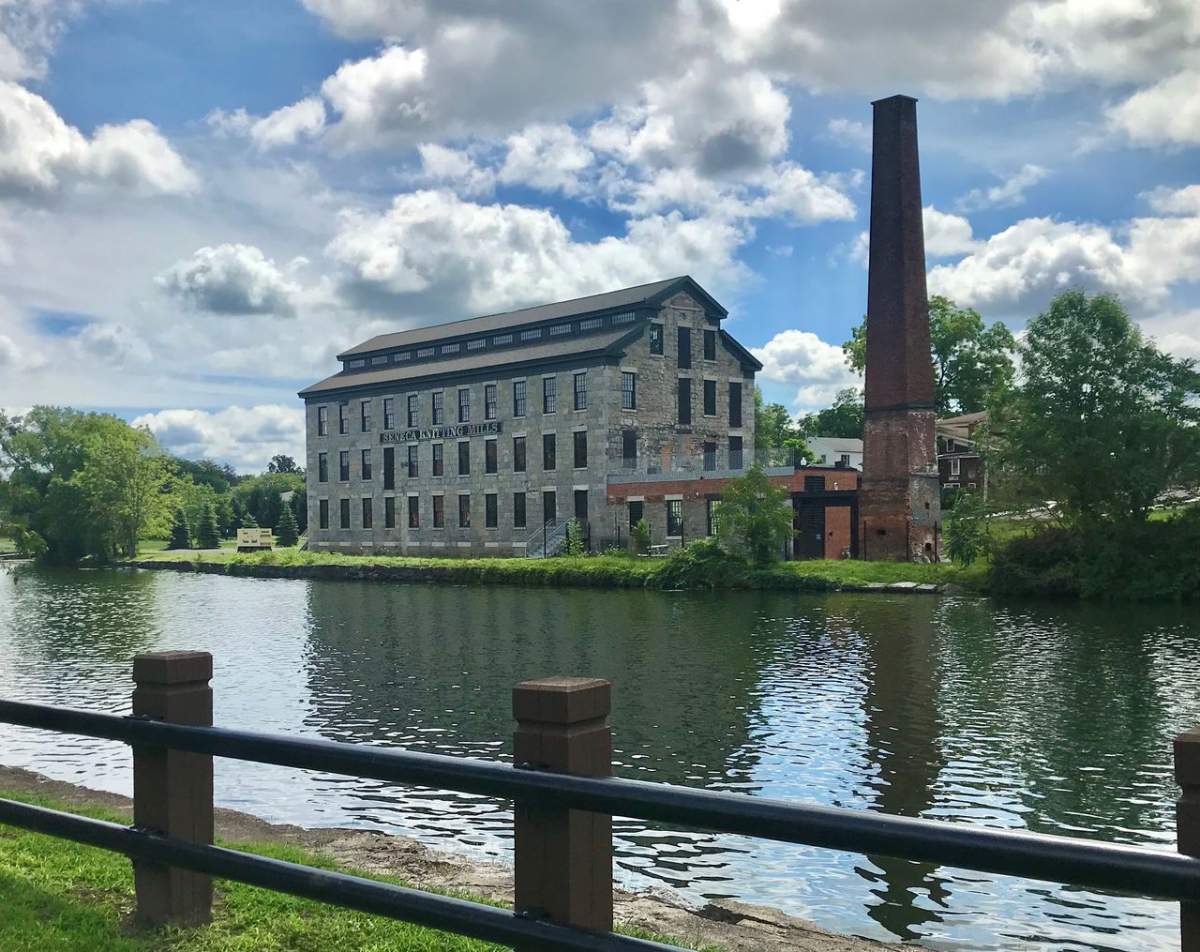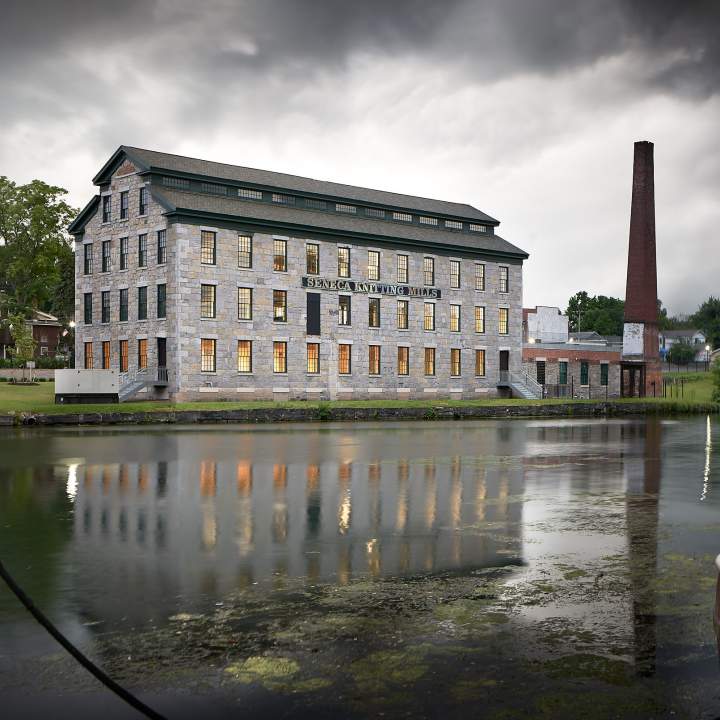August 17, 2020
New ‘labor of love’ National Women’s Hall of Fame in Seneca Falls opens later this month
Seneca Falls, N.Y. – When the National Women’s Hall of Fame was considering where to move its cramped quarters on Fall Street, the large, crumbling former wool mill across the Cayuga-Seneca Canal made so much sense.
It was built in 1844, four years before the first women’s rights convention was held in Seneca Falls. Workers at the Seneca Knitting Mill attended the convention. Two of the Mill’s trustees, Charles Hoskins and Jacob Chamberlain, were among the 32 men to sign the Declaration of Sentiments that year. The Declaration crystalized the everyday rights women sought and debated at that now-celebrated convention.
The building, too, held sentimental and historical significance as one of the few remaining mills along the statewide canal system.
Neither Kate Bennett, board president of the National Women’s Hall of Fame, nor Jeanne Giovannini, the chair of the mill project, had been present when the old mill was purchased in 2007. But they’d heard stories about its condition.
“When we bought it, we knew it would be a tremendous project to rehabilitate the building to make it possible to occupy it,” Bennett said. “It took us the best part of 10 years to get to the point where we could see that we really had the building in a stable condition with a new roof, new windows and ready to put exhibits into.”
“To get to the point where we had a first-floor certificate of occupancy,” Giovaninni said, “where we have four floors of fire protection and there’s heat all the way up and the first floor is completely done – it was about $10 million to get to that point.”
The new Women’s Hall of Fame, located in that rejuvenated mill, will open to the public Tuesday, Aug. 25. Visitors can tour the first floor only, where “introductory exhibits” were assembled to provide a taste of what’s on the Hall’s horizon.
The Hall is currently fundraising to open the second floor and fill it with exhibits. Giovannini and Bennett said they’ve targeted 2023 for the second floor unveiling, though Giovannini underlined that the first fundraising campaign was derailed by a national financial crisis. The initial $10 million came from individual and corporate donors, the Town of Seneca Falls, state and federal grants and historic tax credit investors, Giovannini said.
Visitors now walk into a large modern space dominated by tall windows that allow natural light to flood the floor. The most prominent feature resides to the right, where gigantic white scrolls bearing the names of every inductee illuminate the space. The Hall has inducted 287 women to date. Their names and a brief description of their areas of expertise are displayed on those scrolls.
There are testaments in the Hall to the women and men of Seneca Falls who organized around the cause of suffrage and universal rights for women. There are tales of the women who worked in the knitting mill, an industry that predominately hired women workers in its waning years. Some women wrote their names on a preserved pillar on the day the mill closed for good in 1999.
“They only milled wool. Since they were abolitionists, they were not interested in slave cotton,” Bennett said. “The (wood) floors are just seeped with lanolin. They’re beautiful floors. There was so much lanolin on the floor from the wool.”
There are a couple interactive elements to the first floor, where a small gift shop will be located. Bennett and Giovannini emphasized the temporary or “introductory” nature of what people will see when they visit. Exhibits are mobile enough to be moved to new spaces or to different locations.
“They give you an idea of what we’re going to have on all four floors when it’s finished,” Bennett said. “But none of them are as fleshed out as they will be when we do have the real first floor and second floor exhibits. We will have so much more about our inductees. We will have many more stories to tell about what happened in the mill and what happened in Seneca Falls in 1848 and about the confluence of ideas that came together in Seneca Falls among the Quakers and the industrialists and the abolitionists and Native Americans. All these people came together and it was a rich mix of ideas that propelled us forward.”
The Hall hired a woman-owned design firm (Frame, formerly Portico) out of Seattle, Washington to create the interiors of the building. Bennett and Giovannini were part of a group of about six people who conceptualized the storytelling that would materialize inside the museum.
Giovannini said the property will turn its attention next to restoring a smokestack and designing and installing an elevator to allow access to the upstairs floors. Eventually, the Hall campus will encompass a welcome center, a gift shop and “probably a café.”
All of that, Giovannini said “is farther down the road.”
It’s been a long and sometimes winding road of delays. But the opening of the museum’s first floor signifies the public start of a project Giovannini called a “labor of love.”
“The people in Seneca Falls said more than 50 years ago that we really need to build a celebration of American women in this place,” Bennett said. “We are just some of the people who have stood on the shoulders of all the other people who have worked diligently to create this.”
Written By Donna Ditota at Syracuse.com, the original article can be found here.






